Marang (Artocarpus odoratissima) is native to the Philippines and can thrive well in the marginal and hilly areas of Mindanao.
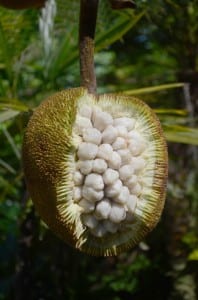 There are two varieties of Marang that are locally available and are commercially sold in the market: brown and evergreen. The brown variety has light to dark brown peel with white to off-white pulp. The average fruit size weighs 1,250-1,700 grams and has 6-10 percent edible portion. Meanwhile, the evergreen variety has green to light green peel and white pulp. It is heavier (1,300-1,800 grams), has more edible portion (10-15 percent), and is sweeter than the brown variety.
There are two varieties of Marang that are locally available and are commercially sold in the market: brown and evergreen. The brown variety has light to dark brown peel with white to off-white pulp. The average fruit size weighs 1,250-1,700 grams and has 6-10 percent edible portion. Meanwhile, the evergreen variety has green to light green peel and white pulp. It is heavier (1,300-1,800 grams), has more edible portion (10-15 percent), and is sweeter than the brown variety.
Going beyond its thorny and unsightly appearance, Marang has become a favorite fruit for those who have tasted it. It is known for its appetizing taste, strong but fragrant sugary smell, and nutritive value. It contains protein, fat, carbohydrates, crude fiber, ash, calcium, phosphorus, iron, retinol, beta-carotene, vitamin A, thiamine, riboflavin, niacin, and ascorbic acid.
But this fruit is seasonal. It is only available from May to September. After harvest, a mature fruit becomes highly perishable, lasting for 2-3 days only. Once opened, a ripe Marang must be consumed immediately because it can easily lose its flavor and it oxidizes causing the pulp to brown. It was due to the seasonality and perishability of Marang that this fruits is undervalued and underutilized. Given its high demand, its short shelf life hinders its market potential.
To address this, a group of researchers from the University of Southern Mindanao Agricultural Research Center (USMARC) led by Dr. Emma K. Sales, implemented the project titled “Pilot Testing of Postharvest Technologies and Product Diversification of Marang”. This research initiative, funded by the Bureau of Agricultural Research (BAR) and the High Value Commercial Development Program (HVCDP) of the Department of Agriculture (DA), looked into the possibility of making processed products from Marang and making them readily available even during off-season. The result of this project is also seen to encourage growers, farmers, enthusiasts, and entrepreneurs to explore and venture into Marang processing.
Dr. Sales underscored that through the processing technologies that they have developed for Marang, postharvest loss is reduced. On the business potential, the food products will be a good source of livelihood and additional income for Marang growers. Once the products are known, it will provide a niche for this exotic fruit in the market. Products can be marketed not only locally but also to foreign consumers.
In terms of postharvest techniques, Dr. Sales emphasized that in harvesting the fruit, it is important that the right stage of maturity is determined. For the commercially-available ‘evergreen’ and ‘brown’ cultivars, they must be harvested 80-90 days from their fruit sets. She also mentioned that using appropriate tools is important to minimize losses during harvesting. For storability, Marang fruits can be prolonged using appropriate packaging materials and cold storage. For ripening techniques, washing and covering the fruit with wet sack or cloth were found to be faster, easier while ethylene scrubber and packing in a closed polyethylene bag or keeping them under modified atmosphere condition could delay the ripening.
The group of Dr. Sales was able to develop at least 11 products from Marang, nine from the pulp and two from its seeds. The food products from the pulp include: blanched pulp, concentrate, juice, jam, conserve, jelly, ice cream, vacuum-fried, and vinegar. Meanwhile, among the food products developed from its seeds are coffee and nut butter.
To produce the blanched Marang pulp, an antioxidant, Metabisulfite, was added when packed in either polyethylene bag (Ziploc) or Styrofoam. The antioxidant will delay the browning. Cold storage is set at 00C and 40C. The taste and appearance of the pulps were rated acceptable. The Marang concentrate is a combination of the puree and sugar while the Marang juice comes from the diluted concentrate. The Marang jam is produced from sugar and pulp fruit while the conserve is jam mixed with dried fruits and nuts. Marang jelly is made from the water used in blanching the pulp carrying with it the flavor from the fruit. Ice cream made from Marang fruit is a home-made frozen dessert capturing the flavor and taste from the fresh fruit while the vacuum-fried is the crispy pulp version. The overripe Marang are usually made into vinegar.
The seeds of Marang are also edible. It can be roasted and grind to make Marang coffee; and can be pulverized and mixed with sugar, oil, and butter to produce Marang nut butter. ### (Rita dela Cruz) bar.gov.ph
Recipes are formulated and tested by retired USM professor Virgilia Tacardon Paclibar.
Marang Jam
1. Cook 1 cup flesh of mature, ripe marang fruit (seeds removed) with 1 cup white sugar until thick.
2. Add 1 teaspoon lemon juice to improve appearance and flavor.
3. Fill the jam into a jar.
4. Exhaust for 10 minutes then process for 45 minutes to 1 hour.
Marang Paste
1. Cook 1 cup flesh of ripe marang fruit (seeds removed) with 1 cup white sugar until very thick.
2. Spread the mixture in wax paper and then roll it using a rolling pin to flatten the mixture to one half-inch thick.
3. Allow the mixture to cool then wrap it with cellophane and store in air-tight jars.
Marang Brittle
1. Choose seeds of fully ripe marang
2. Sort and sun dry
3. Toast until cooked.
4. Shell and grind coarsely
5. Caramelize water and sugar at 1:1 ratio.
6. Add the grounded seeds into the pan and cook further until thick and sticky
7. Spread while hot on a greasy tray or wooden surface and then flatten with rolling pin.
8. Cut it according to the desired number of pieces and thickness.
9. Wrap or store in jars.
Marang Concentrate
1. Choose matured marang fruits.
2. Separate pulp.
3. Pass through a coarse sieve.
4. Cook in sugar.
5. Lemon juice or calamansi juice may be added while cooking to improve color and taste. Fill the mixture into jars and exhaust for 10 minutes then process for 45 minutes to 1 hour.
6. Store in cool, dry place.


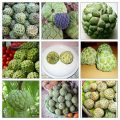
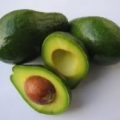
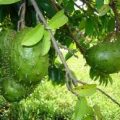
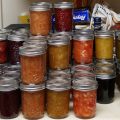

in mindanao, where marang is abundant, people prefer to eat this fruit fresh…
what companies do manufacture marang products and where is it located??